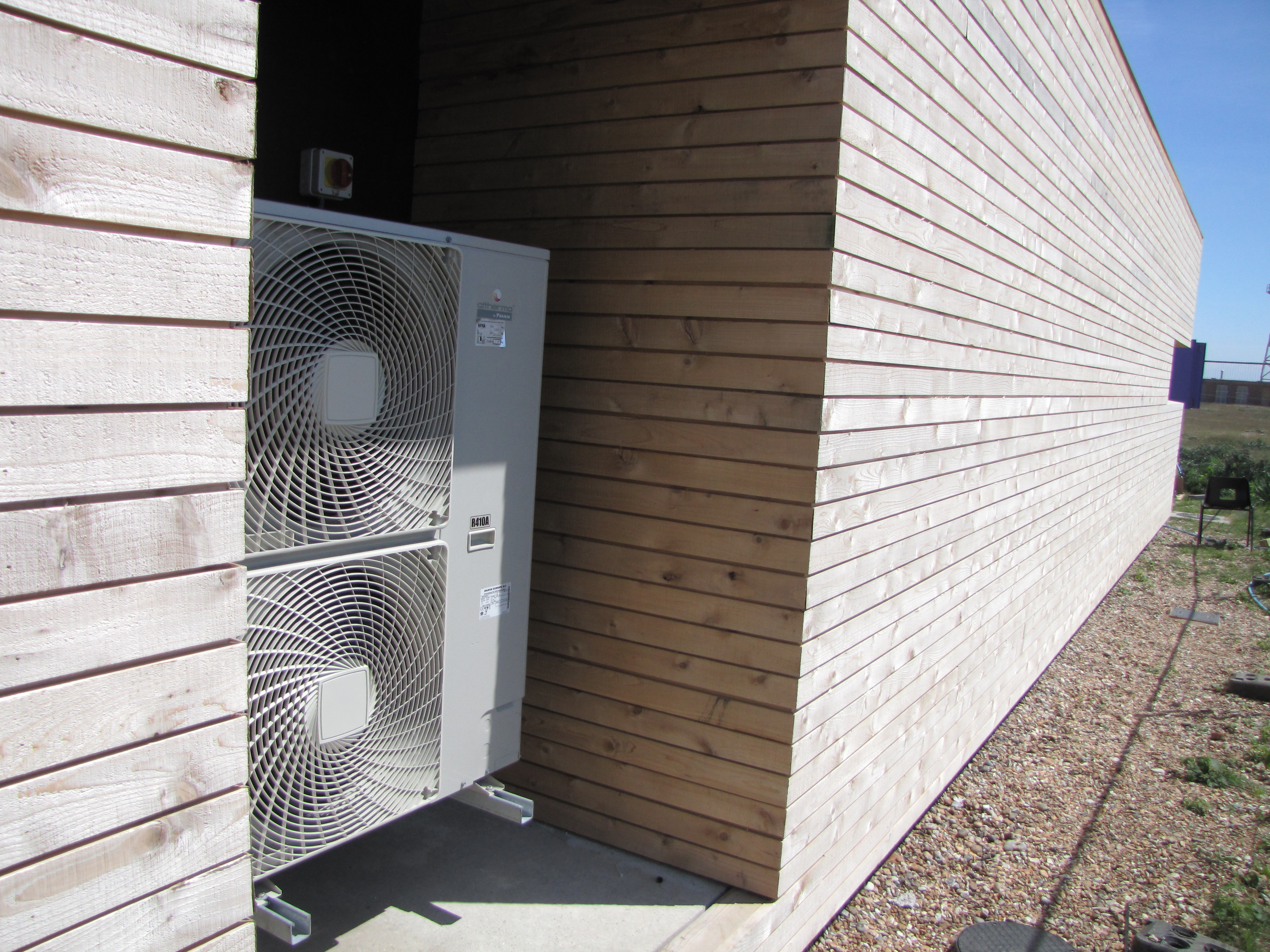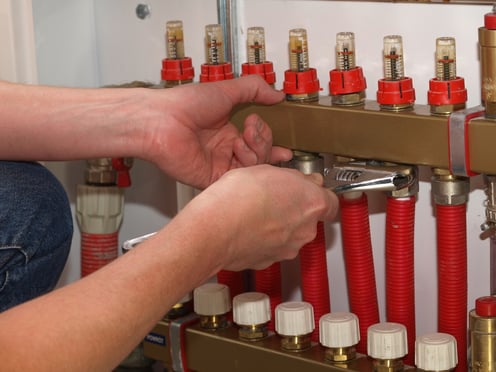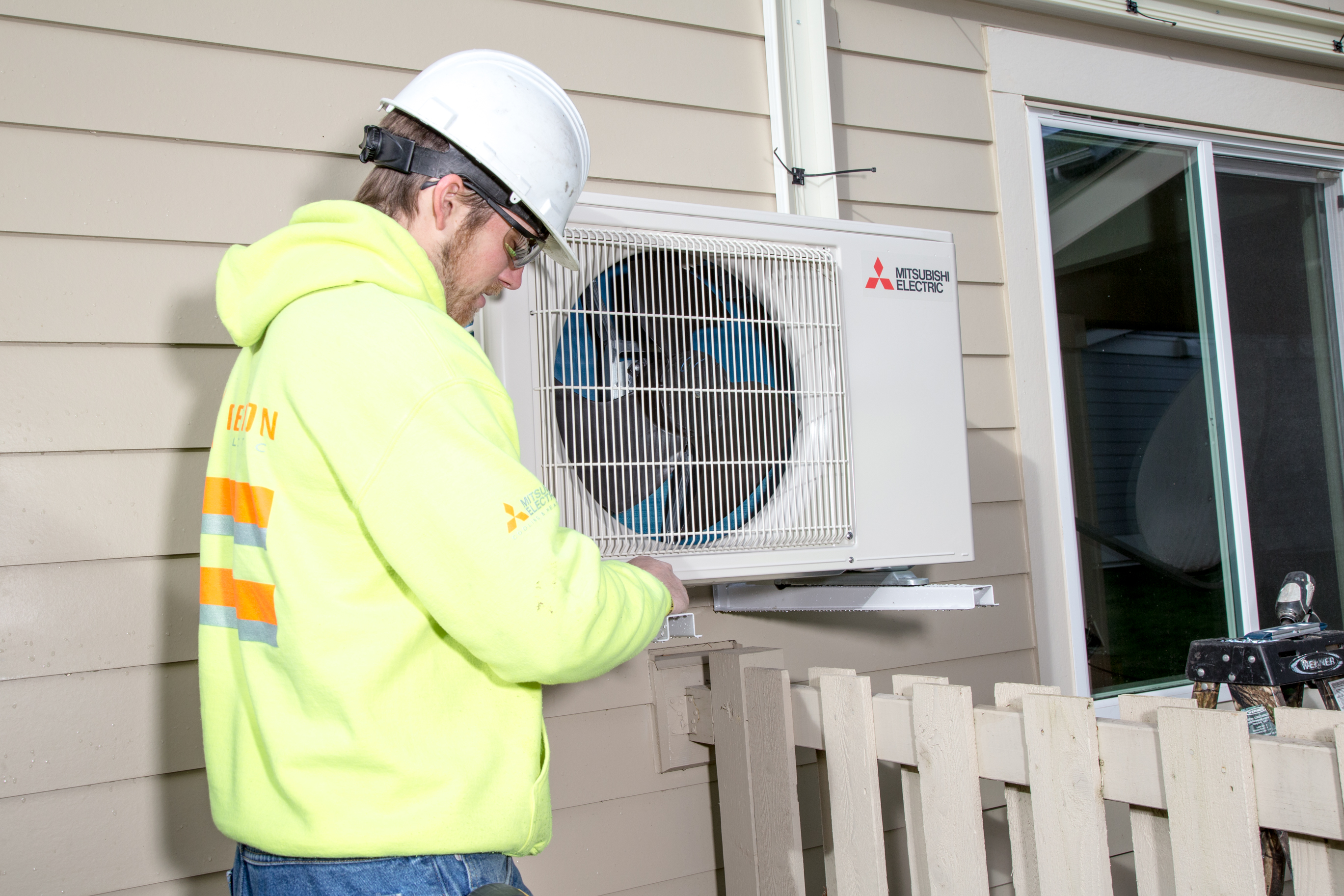
Heat pumps are a possible way to close the gap between low-cost, high-carbon gas power and high-cost, low-carbon electricity in heating the British domestic sector....
There are many innovations transforming building services driven mainly by the huge challenge of achieving Net Zero targets. In a series of articles, we look at these innovations specifically where they are appropriate for apartment blocks.
Here we look at heat pump use within heat networks.
Because fifth-generation heat networks use disseminated power sources, they can make use of air, ground or water-source heat pumps even if heat pumps alone cannot heat water to the required flow temperature. To be cost-effective, heat pumps are likely to need local waste heat sources.
![Schematic of fifth generation heat network powered by renewable and waste heat energy sources (Boesten et al [2019] Adv Geosci 49:129)](https://www.atamate.com/hs-fs/hubfs/Apt2_Schematicunlabelled.png?width=600&name=Apt2_Schematicunlabelled.png) |
|
Schematic of fifth generation heat network powered by renewable and waste heat energy sources (Boesten et al [2019] Adv Geosci 49:129) |
The other articles in this series on recent innovations in building services for apartment blocks are:
Apartment innovations 1: fifth generation heat networks
Apartment innovations 3: hydrogen in the gas main
Apartment innovations 4: the direct electric option
The British government has committed to a net-zero carbon economy by 2050 but in the domestic sector, any plan for cutting carbon emissions must overcome a fundamental problem: in recent years, £1 worth of mains gas has typically delivered five times as much heating energy as £1 worth of mains electricity and even with the ongoing spike in gas prices, gas is likely to remain considerably more cost-efficient than electricity for some time to come. However, the greenhouse gas emissions associated with 1kWh of mains gas are nearly twice those associated with 1kWh of electricity derived from the British national grid.
Most homes in Britain are still dependent on gas for space and water heating and replacing gas with electricity is an essential part of the government's plan to achieve net zero in the domestic sector. With the price discrepancy predicted to increase in the coming years, cutting gas usage without dramatically increasing energy costs is going to require innovative approaches to deriving heat energy from mains electricity.
Our white paper on achieving net-zero in the domestic sector suggests some possible approaches but this article will discuss one possible approach in more detail; using heat pumps to power the sort of fifth-generation heat network introduced in the previous article in this series.
A defining feature of the fifth-generation heat network is that it uses disseminated heat sources. Earlier heat networks drew their energy from a central powerplant, which limited them to energy sources that delivered enough energy to power the entire network. In practice, it left most heat networks dependent on gas power.
Many heat networks are sited close to sources of waste heat which they are unable to use because they would not provide enough energy to power the entire network. A fifth-generation network may also have a powerplant but dissemination allows it to use those waste heat sources to offset the plant’s energy requirement.
 |
| Fixing an underfloor heating manifold (Shutterstock) |
A heat pump works by drawing electrical energy from the mains to extract heat energy from an external source, multiplying its output by a coefficient of performance (CoP). The smaller the difference between the source and the required output, the greater the CoP which means that when the required output temperature is as high as the water in a heat network, higher source temperatures deliver higher CoPs.
Heat pumps are usually classified according to their source:
Air-source heat pumps draw energy from either ambient air or the exhaust air of a ventilation system. They have the advantage of being easy to install and can be located for easy maintenance access. Their major limitation is that space heating demand is highest in the winter when ambient air temperatures and consequently the CoP is its lowest.
Ground-source heat pumps draw energy from an underground heat exchanger, utilising the fact that temperatures a few metres under the ground are fairly constant at 10°C (50°F) in most of the British Isles throughout the year. They deliver a higher CoP than air-source heat pumps in the winter but they are expensive to install, difficult to maintain and some designs cover a large area, making them impractical unless they are part of a development that includes a large area that is not built on such as a car park or playground.
Water-source heat pumps draw energy from water, which has a higher heat capacity than air, and do not present the installation and maintenance problems of ground-source heat pumps. However, ambient water temperatures are subject to the same seasonal fluctuation as ambient air, hence their CoP is also lowest in the winter when heating demands are highest.
The major advantage of heat pumps is that they can make use of waste heat. For example, Thames Water and Kingston Council are currently developing a scheme to draw waste heat from the Hogsmill water treatment plant, which discharges effluent at 10-15°C (50-59°F) throughout the year. The scheme will use water-source heat pumps to provide 2,000 homes with low-carbon heat. Hogsmill is the smallest of London's wastewater plants so if the scheme is successful, it may be replicated on a larger scale in other parts of the city.
Because fifth-generation heat networks use disseminated energy sources, a designer can use as many heat pumps of different types that are needed to utilise available waste heat sources. For example, the GreenSCIES integrated energy system planned for the London Borough of Islington will use air-source heat pumps to draw energy from datacentres and the London Underground but will not be dependent on any of those sources. If a datacentre is closed, the network will only lose one of many sources of energy. If a new source of waste heat becomes available, heat pumps can be added to harvest the heat without disrupting the functioning of the network.
Ground-source heat pumps open the possibility of interseasonal heat transfer (IHT), in which waste heat is collected during the summer and pumped into a thermal store where it can be retrieved during the winter.
An example is the Acacia Intergenerational Centre, a community centre in Mitcham, London, which falls within the Merton Council Area. Merton Council requires its buildings to meet at least 10% of their energy demand using onsite renewable sources so they involved ICAX, a firm that specialises in IHT.
The Acacia Centre's array of heat pumps are designed to use waste heat in the building itself as an energy source, transferring heat from rooms that are too hot to rooms that are not warm enough. Such intrabuilding heat transfer minimises the heating energy requirements during the winter but during the summer, the building generates more heat than it can use and the heat pumps function as a conventional air-conditioning system, cooling the building by expelling heat energy from the building.
Instead of expelling the waste heat into the atmosphere, it is pumped into underground pipes which act as the thermal store, retaining the heat energy until the winter when the building uses it for heating. A ground-source heat pump then uses the stored heat as an energy source and pumps it back into the building.
The approach proved highly efficient but it was only possible because the Acacia Centre is on a site large enough to accommodate the storage pipes. Its application in the residential sector is likely to be limited by space constraints but heat networks often do cover large areas that may include car parks or playgrounds that the pipes can be placed beneath.
Extensive field trials of air- and ground-source heat pumps in Britain have been carried out by the Energy Savings Trust (EST) [PDF] and by University College London (UCL) [PDF] and both studies showed average CoPs of below 300%, falling well below the 450-500% that would be needed to match the cost-per-unit-energy delivered by mains gas. However, there was considerable variation between installations and in the UCL trial, a small number did operate with CoPs of over 450% while the CoPs of around a quarter were below 230% in both trials.
Both studies reported that a lot of the sites they reviewed used pumps that had been poorly installed, managed or maintained so the disappointing average CoP may not reflect what could be achieved. However, even if the problem of poor installations can be resolved, the field trials show that heat pumps able to match the cost-per-unit energy of mains gas are outliers. Heat pumps may reduce the energy price hike of switching from mains gas to electricity but they cannot eliminate it.
 |
The most likely way to maximise the CoP of air- or water-source heat pumps is to use sources of waste heat that provide a heat source at a constant temperature throughout the year. Islington's GreenSCIES network can make ample use of heat pumps because it is sited in a city centre where office blocks, datacentres and the London Underground generate excess heat even in the winter, but all that waste heat can only supply part of GreenSCIES's total heat energy requirement.
If heat networks are to play an important role in domestic heating, they will need to operate in suburban environments that are largely residential and offer few such waste heat sources. Every installation will require a cost-benefit calculation to confirm that heat pumps will deliver enough energy to justify the cost and embodied carbon associated with their installation and to compare them with alternate sources of energy.
We have shown that air-source heat pumps are unlikely to improve on the carbon- and cost-efficiency of heating systems powered directly by mains electricity.
That comparison was based on heat pumps drawing energy from ambient air and the higher CoPs achievable using waste heat may show a more favourable result, but we are not aware of any such comparison having been made.
Heat pumps have received a lot of attention since the UK Housing: Fit for the Future report was published by the government’s Climate Change Committee (CCC), which informed the government's Future Homes consultation on the future of housing regulations. However, neither of those documents gave a clear rationale for prioritising heat pumps over other technologies that are currently available or may become available.
Air-source heat pumps are often presented as an almost magical solution to the difficulties in switching from gas to electric heating and there is a danger that the attention they receive is at the expense of solutions that may be more appropriate in many situations.
Our view is that much of the discussion of heat pumps is based on unrealistic projections of the CoP they are likely to deliver, and we are concerned that the optimism around their use in fifth-generation heat networks may be based on similarly unrealistic expectations.
 |
It remains unclear what lay behind the wide variation of CoPs reported from field trials and if heat pump performance is unpredictable, it cannot be assumed that any given installation will deliver a CoP at the high end of the attainable range. The field trial reports ascribe some of the poorer performances to pumps being incorrectly installed, which is a problem that could be solved by introducing certification standards for installers. However, heat pumps are unlikely to deliver electrical heating at the same cost-per-unit energy as mains gas for the foreseeable future.
Nevertheless, fifth-generation heat networks may prove to be a better application for heat pumps than individual buildings because they can use the energy they contribute without depending on them, especially in urban settings which offer many sources of waste heat.
As with any other energy source, installation of heat pumps must be dependent on an evaluation based on a realistic projection of the costs and benefits of heat pumps compared to other possible energy sources.
If you’d like to know more about how the atBOS platform can enhance the energy performance of apartment blocks or any other type of building, ask us on the form and we'll be happy to discuss it.

Heat pumps are a possible way to close the gap between low-cost, high-carbon gas power and high-cost, low-carbon electricity in heating the British domestic sector....

Energy Systems Catapult has declared its Electrification of Heat (EoH) project successful in installing heat pumps in all types and ages of British homes. However, their...